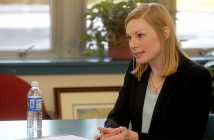
The National Association of Charter School Authorizers (NACSA) has released its annual report on an interactive website that offers the largest amount of data concerning charter school authorizers in its history.
The annual State of Charter Authorizing (SOCA) report takes an in-depth look at the significant growth seen in the number of authorizers that have cropped up over the last five years. According to the report, this is due almost completely to the increase in local school district authorizers. Local districts account for 90% of the 1,050 authorizers in the country. District authorizers make up 50% of the largest authorizers in the nation.
“National and individual authorizing trends stemming from our analysis of the nation’s only survey of authorizers is an essential tool for education decision makers, foundations, legislators, and researchers to inform their understanding of charter school authorizing,” said Greg Richmond, president and CEO of NACSA.
According to M. Karega Rausch, vice president of Research and Evaluation at NACSA, the growth of local school district authorizers can be considered to be both helpful and harmful to students across the country. While many districts have not yet developed the ability to properly oversee charter schools in addition to their other duties, he said the outcomes are extremely beneficial when district officials are able to work together in creating a portfolio of both traditional and charter schools that meet the needs of the community they serve. He specifically cited Denver Public Schools as a good example of that kind of partnering.
One of the most important tasks assigned to an authorizer is to determine whether or not to renew a charter, or to revoke it for any number of reasons, including academic performance. Data used for the survey suggests that the number of charter schools being shut down is being reduced. While the rate of charter school closures has held steady at around 3.8% over the last four years when looking at authorizers in charge of 10 or more schools, the number of charter schools in total has increased.
The report also discovered that closures occurring outside of the renewal process are taking over the planned accountability schedule at an increasing rate. Report authors feel this piece of information to be important enough to warrant further research.
The increase could mean that authorizers are being more aggressive in their decisions to close underperforming schools before renewal timeframes, which usually occur once every five years. It could also be a sign that state closure laws are forcing these types of schools to close prior to outside renewal. The authors go on to suggest it could mean that an increasing number of schools are being allowed to open even though they should not be in operation.
Also included in the report are additional longitudinal data such as trends in approval and closure rates, field demographics, compositions concerning authorizer staffing, and data pertaining to changes in the size of authorizer portfolios. NACSA plans on releasing issue briefs over the next two months that offer additional data concerning a number of topics within the charter school sector such as special education and school discipline policies.




